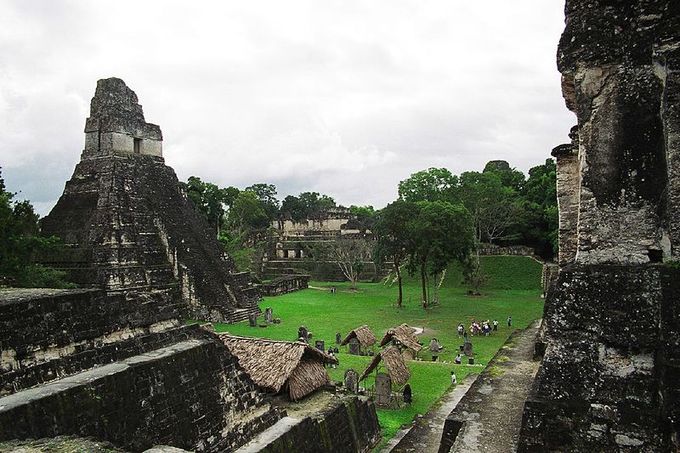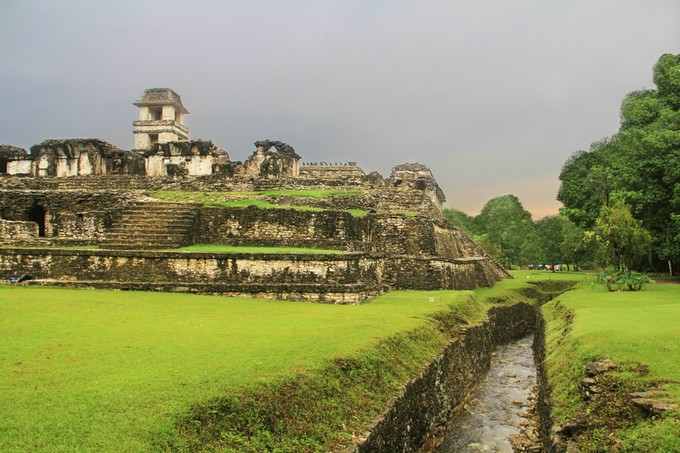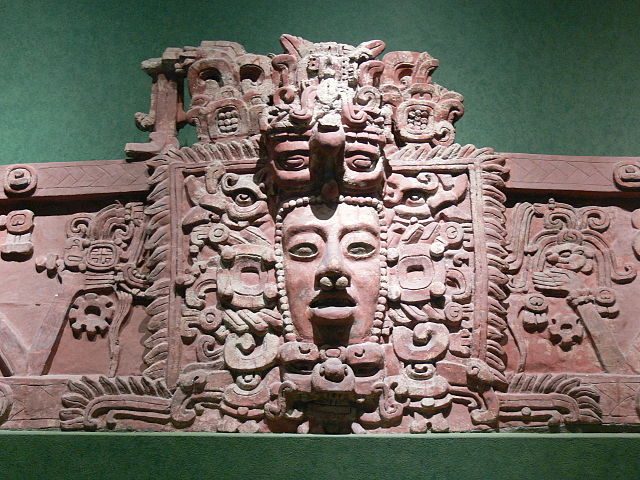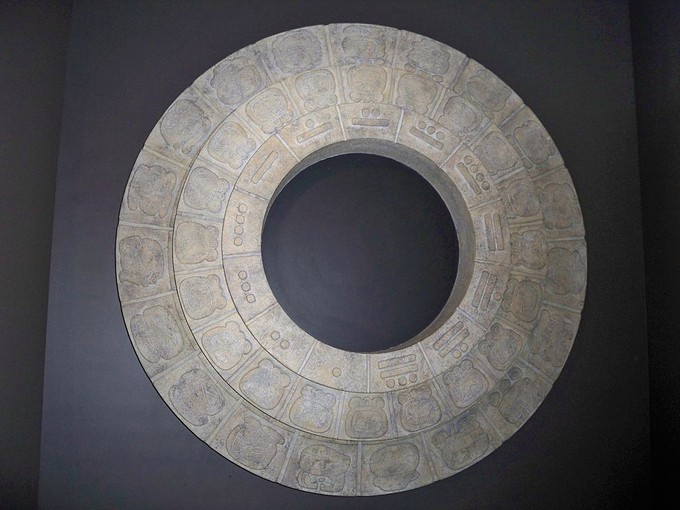Video In the ninth century C.E. a loose Maya empire was constructed by the state of ?
Kinh Nghiệm Hướng dẫn In the ninth century C.E. a loose Maya empire was constructed by the state of Mới Nhất
Họ tên bố(mẹ) đang tìm kiếm từ khóa In the ninth century C.E. a loose Maya empire was constructed by the state of được Cập Nhật vào lúc : 2022-12-17 20:30:12 . Với phương châm chia sẻ Thủ Thuật về trong nội dung bài viết một cách Chi Tiết Mới Nhất. Nếu sau khi tham khảo tài liệu vẫn ko hiểu thì hoàn toàn có thể lại Comments ở cuối bài để Mình lý giải và hướng dẫn lại nha.An important city that boasted some of the most complex architecture from the Classic period of Maya history.
Nội dung chính Show- What was the largest single building in Mesoamerica?Which of the following devices did the ancient Maya build in order to trap silt carried by the numerous rivers passing through the lowlands?Who created the most flexible and sophisticated system of writing found in the ancient Americas?How much written material survives from the Mayans?
This 365-day solar calendar utilized the movement of Earth around the Sun to calculate the year.
stelaeCarved stones depicting rulers with hieroglyphic texts describing their accomplishments.
The Classic period lasted from 250 to 900 CE. It saw a peak in large-scale construction and urbanism, the recording of monumental inscriptions, and significant intellectual and artistic development, particularly in the southern lowland regions. During this period the Maya population numbered in the millions, with many cities containing 50,000 to 120,00o people. The Maya developed an agriculturally intensive, city-centered civilization consisting of numerous independent city-states of varying power and influence. They created a multitude of kingdoms and small empires, built monumental palaces and temples, engaged in highly developed ceremonies, and developed an elaborate hieroglyphic writing system.
The political, economic, and culturally dominant “core” Maya units of the Classic Maya world system were located in the central lowlands, while the corresponding peripheral Maya units were found along the margins of the southern highland and northern lowland areas. The semi-peripheral (mediational) units generally took the form of trade and commercial centers. But as in all world systems, the Maya core centers shifted through time, starting out during Preclassic times in the southern highlands, moving to the central lowlands during the Classic period, and finally shifting to the northern peninsula during the Postclassic period.
MonumentsThe most notable monuments are the stepped pyramids the Maya built in their religious centers and the accompanying palaces of their rulers. The palace Cancuén is the largest in the Maya area, but the site has no pyramids. On the other hand, cities like Tikal and Copán illustrate the wealth of architectural accomplishments during these prolific centuries. Copán came to its full power between the 6th and 8th centuries, and included massive temples and carvings that illustrate the full power of its ruling, and often merciless, emperors.

Tikal Temple. Classic period temple from Tikal, Guatemala.
The cities of Palenque and Yaxchilan were also cultural and religious centers in the southeastern Maya region, and included large temples, ball courts, and even a uniquely vaulted ceiling in the hallway of the Palenque Palace.

The Palenque Palace and aqueduct. Cities like Palenque boasted some of the most refined architectural works in the Classic period of Maya culture.
Other important archaeological remains include the carved stone slabs usually called stelae (the Maya called them tetun, or “tree-stones”), which depict rulers along with hieroglyphic texts describing their genealogy, military victories, and other accomplishments.

Maya mask. Stucco frieze from Placeres, Campeche. Early Classic period (c. 250–600 CE).
TradeThe political relationship between Classic Maya city-states has been likened to the relationships between city-states in Classical Greece and Renaissance Italy. Some cities were linked to each other by straight limestone causeways, known as sacbeob. Whether the exact function of these roads was commercial, political, or religious has not been determined.
The Maya civilization participated in long distance trade with many other Mesoamerican cultures, including Teotihuacan, the Zapotec, and other groups in central and gulf-coast Mexico. In addition, they traded with more distant, non-Mesoamerican groups, such as the Taínos of the Caribbean islands. Archeologists have also found gold from Panama in the Sacred Cenote of Chichen Itza. Important trade goods included:
- CacaoSaltSeashellsJadeObsidian
The Maya utilized complex mathematical and astronomical calculations to build their monuments and conceptualize the cosmography of their religion. Each of the four directions represented specific deities, colors, and elements. The underworld, the cosmos, and the great tree of life the center of the world all played their part in how buildings were built and when feasts or sacrifices were practiced. Ancestors and deities helped weave the various levels of existence together through ritual, sacrifice, and measured solar years.
The Maya developed a mathematical system that is strikingly similar to the Olmec traditions. The Maya also linked this complex system to the deity Itzamna. This deity was believed to have brought much of Maya culture to Earth. A 260-day calendar (Tzolkin) was combined with the 365-day solar calendar (Haab’) to create a calendar round. This calendar round would take fifty-two solar years to return to the original first date. The Tzolkin calendar was used to calculate exact religious festival days. It utilized twenty named days that repeated thirteen times in that calendar year. The solar calendar (Haab’) is very similar to the modern solar calendar year that uses Earth’s orbit around the Sun to measure time. The Maya believed there were five chaotic days the end of the solar year that allowed the portals between worlds to open up, known as Wayeb’.

A Classic period Maya calendar. Each symbol represents a specific day within the calendar. When the Tzolkin and Haab’ calendar’s are combined they create a fifty-two-year solar calendar.
These calendars were recorded utilizing specific symbols for each day in the two central cycles. Calendrical stones were employed to carefully follow the movement of the solar and religious years. Although less commonly used, the Maya also employed a long count calendar that calculated dates hundreds of years in the future. They also inscribed a lengthier 819-day calendar on many religious temples throughout the region that most likely coincided with important religious days.
DeclineThe Classic Maya Collapse refers to the decline of the Maya Classic Period and abandonment of the Classic Period Maya cities of the southern Maya lowlands of Mesoamerica between the 8th and 9th centuries. This should not be confused with the collapse of the Preclassic Maya in the 2nd century CE. The Classic Period of Mesoamerican chronology is generally defined as the period from 300 to 900 CE, the last 100 years of which, from 800 to 900 CE, are frequently referred to as the Terminal Classic.
It has been hypothesized that the decline of the Maya is related to the collapse of their intricate trade systems, especially those connected to the central Mexican city of Teotihuacán. Before there was a greater knowledge of the chronology of Mesoamerica, Teotihuacan was believed to have fallen during 700–750 CE, forcing the “restructuring of economic relations throughout highland Mesoamerica and the Gulf Coast.” This remaking of relationships between civilizations would have then given the collapse of the Classic Maya a slightly later date. However, it is now believed that the strongest Teotihuacan influence was during the 4th and 5th centuries. In addition, the civilization of Teotihuacan started to lose its power, and maybe even abandoned the city, during 600–650 CE. The Maya civilizations are now thought to have lived on, and also prospered, perhaps for another century after the fall of Teotihuacano influence.
The Classic Maya Collapse is one of the biggest mysteries in archaeology. The classic Maya urban centers of the southern lowlands, among them Palenque, Copán, Tikal, Calakmul, and many others, went into decline during the 8th and 9th centuries and were abandoned shortly thereafter. Some 88 different theories, or variations of theories, attempting to explain the Classic Maya Collapse have been identified. From climate change, to deforestation, to lack of action by Maya kings, there is no universally accepted collapse theory, although drought is gaining momentum as the leading explanation.
What was the largest single building in Mesoamerica?
That distinction belongs to great pyramid Cholula (Puebla), considered by some to be the largest single structure (by volume) in the Americas. While the pyramid is the greatest single building of the Mesoamerica architectural tradition, it is poorly preserved and understood.Which of the following devices did the ancient Maya build in order to trap silt carried by the numerous rivers passing through the lowlands?
Farmers used to build earthen dams (known as tabias) across the valley floors to trap run-off water and silt.Who created the most flexible and sophisticated system of writing found in the ancient Americas?
The Maya writing system is considered by archaeologists to be the most sophisticated system ever developed in Mesoamerica. The Maya wrote using 800 individual signs or glyphs, paired in columns that read together from left to right and top to bottom.How much written material survives from the Mayans?
Our knowledge of ancient Maya thought must represent only a tiny fraction of the whole picture, for of the thousands of books in which the full extent of their learning and ritual was recorded, only four have survived to modern times (as though all that posterity knew of ourselves were to be based upon three prayer ... Tải thêm tài liệu liên quan đến nội dung bài viết In the ninth century C.E. a loose Maya empire was constructed by the state of